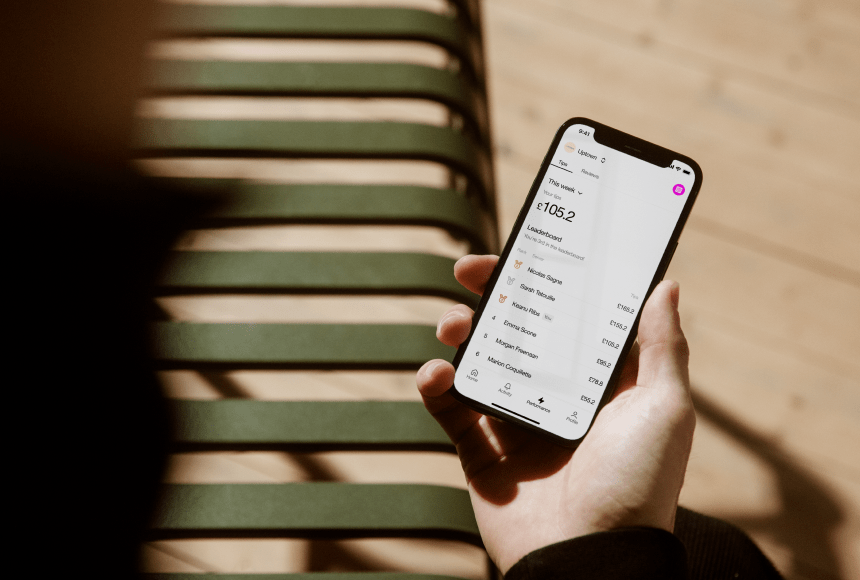
Key Metrics That Help You Run a More Profitable and Customer-Focused Restaurant
Why Tracking KPIs Matters More Than Ever
Operating a restaurant can be invigorating—aromas floating from the kitchen, lively chatter from diners, and a bustling front-of-house. However, enthusiasm alone doesn’t ensure profitability or sustainable growth. To truly gauge how well your restaurant is performing, it’s essential to track key performance indicators (KPIs). These metrics give you clear insights into what’s working, where you’re losing money, and how you can improve.
By keeping a pulse on a handful of targeted KPIs, you can quickly spot trends, make data-driven decisions, and refine your approach before small issues snowball into larger problems. In 2025, with the UK hospitality industry more competitive than ever, a restaurant’s success hinges on its ability to adapt, optimise, and deliver consistent customer satisfaction. Below are five KPIs that can help you do just that. Let’s explore each and discover how to evaluate—and elevate—your restaurant’s day-to-day operations.
1. Average Transaction Value (ATV)
Sometimes known as the average ticket or average spend, the Average Transaction Value offers a snapshot of how much each customer spends on a typical visit. For many restaurants, especially those that rely on consistent footfall, hiking up the ATV can significantly enhance overall revenue.
- Calculating it: Add up your total revenue over a set period (say, a month) and divide by the number of transactions. If your restaurant sold £50,000 worth of meals in January across 2,500 receipts, your ATV is £20.
- Why it matters: A higher spend per customer helps offset fixed costs, such as rent and staff wages, boosting profitability without needing to pack in more tables. And in a climate where attracting new diners can be expensive, upselling or cross-selling to existing ones is often more straightforward.
- Improving it: Subtle menu engineering—like offering premium add-ons or creating tasting menus—can naturally lift the average transaction. Encouraging a seamless payment flow, such as using sunday, also helps diners feel at ease when ordering those extra items, since they won’t dread a lengthy wait for the bill.
Monitoring your ATV monthly (or even weekly during peak seasons) allows you to experiment with promotions, combos, or special dishes that nudge guests to spend slightly more per visit.
2. Food Cost Percentage
Balancing taste and cost is an art. Food cost percentage measures the ratio of how much you spend on ingredients relative to what you charge customers. It’s a solid indicator of how efficiently you manage resources and pricing.
- Calculating it: For a given period, sum up your total ingredient expenses, then divide by your total food sales, finally multiply by 100. If your kitchen outlay was £12,000 in March and your total food sales reached £40,000, your food cost percentage is (12,000 ÷ 40,000) × 100 = 30%.
- Why it matters: A consistently high percentage might mean you’re underpricing dishes, buying from costly suppliers, or experiencing waste. On the flip side, an extremely low percentage could compromise dish quality or portion sizes, alienating guests. Typically, restaurants aim for somewhere between 25–35%—but exact targets vary by cuisine and concept.
- Improving it: Consider renegotiating supplier contracts, tweaking recipes, or adjusting portion sizes. Seasonal menu planning helps mitigate price spikes for certain ingredients. If you see your margin slipping, you can swiftly act by removing or re-pricing items that weigh down your profitability.
By consistently tracking food cost percentage, you ensure your menu pricing doesn’t become misaligned with your ingredient outlays—keeping a healthy margin and protecting your bottom line.
3. Table Turnover Rate
Table Turnover Rate measures how many times a table is occupied over a specific period—often during a day’s service or dinner shift. While not every restaurant aims for rapid turnovers (think leisurely fine-dining spots), the speed at which tables free up can directly impact revenue potential.
- Calculating it: Divide the total number of seated parties in a shift by the number of tables. If you seated 100 parties on Saturday night across 25 tables, your turnover rate is 4. This means on average each table was used by four different groups.
- Why it matters: Higher turnover can boost daily income, but if rushed service means diners feel pressured, they might not return. Balancing speed and hospitality is key, so the KPI’s optimum value varies by restaurant style.
- Improving it: Streamline ordering, perhaps with QR-code menus or contactless payment. By letting customers order and pay efficiently—imagine scanning with sunday—you reduce idle time at the table’s end. Additionally, refine server workflows and consider limiting complicated menu items that slow the kitchen down.
Keep in mind: a table turnover rate that’s too high may come at the cost of lower average spending or a hurried guest experience. Find a sweet spot where you can maintain a delightful atmosphere while still seating enough customers to hit your revenue targets.
4. Labour Cost Percentage
Staffing ranks among your biggest expenses, so monitoring labour cost percentage is crucial. It shows how efficiently you schedule and manage employees relative to your revenue. If it’s too high, you’re cutting into profits. Too low, and service could suffer from overworked or insufficient staff, damaging both morale and customer satisfaction.
- Calculating it: Sum up all wages, including taxes and benefits, and divide by total sales over the same period. Multiply by 100. For example, if you paid out £15,000 in labour last month and your total sales were £60,000, your labour cost percentage is (15,000 ÷ 60,000) × 100 = 25%.
- Why it matters: Overstaffing not only reduces your margin but can cause employee disengagement with too little to do. Understaffing, on the other hand, might hamper service quality, hamper table turnover, and spike stress levels. Getting the balance right ensures smooth operations and optimises profits.
- Improving it: Invest in forecasting tools—some restaurants use historical data, big events, and even weather patterns to anticipate footfall. Then schedule staff accordingly. Cross-training employees so they can handle multiple roles (bar, floor, or hosting) also adds flexibility, letting you adjust on the fly if a shift is slower or busier than predicted.
When labour cost is consistently out of line, look for patterns: Do you overstaff weekends expecting big crowds that don’t materialise? Are weekdays understaffed, leading to missed upsell opportunities? Fine-tune until you find that sweet spot aligning with your brand standards and budget.
5. Customer Satisfaction and Online Reviews
Beyond spreadsheets and ratio calculations, a restaurant’s reputation is everything. Tracking how guests feel—through ratings, repeat visits, and social media sentiment—can alert you to budding issues or highlight your biggest strengths. This intangible KPI carries serious weight in 2025, where a single scathing review can quickly go viral.
- Measuring it: Look at Google or TripAdvisor star ratings, check how many people leave positive comments. Gather direct feedback with short surveys or comment cards. Monitor repeated visits from loyalty programme data. Consider your Net Promoter Score (NPS)—how likely guests are to recommend you.
- Why it matters: A wave of negative reviews suggests deeper operational flaws, whether in service or food quality. Conversely, glowing recommendations can be your best marketing—particularly when potential guests weigh up dining options online.
- Improving it: Keep a finger on the pulse by regularly checking review platforms. If certain complaints keep popping up—like slow table greeting or bland sides—address those quickly. Also, use digital payment solutions (like sunday) that incorporate easy post-payment feedback prompts, nudging satisfied diners to post a positive review in the heat of the moment.
Ultimately, a surge in negative feedback or lower repeat customers might prompt you to revisit your menu, adjust staff training, or re-evaluate portion sizes. Every complaint is an opportunity to refine the experience and keep your brand healthy.
How to Implement and Track These KPIs Efficiently
If you’re not used to diving into data, the idea of monitoring multiple KPIs at once can feel overwhelming. The good news is you don’t have to do it alone. From simple spreadsheet templates to more advanced point-of-sale analytics, technology can simplify the process.
- Leverage your POS or card machine system: Many modern POS tools include built-in reporting functionalities, capturing real-time data on sales, menu items, and staff hours. If you invest in a holistic platform, you can quickly export or review relevant KPI stats.
- Set monthly or weekly check-ins: Schedule a brief meeting or personal review to see how each KPI is trending. That consistent rhythm ensures you don’t let potential issues fester.
- Automate where possible: Some digital solutions can alert you if your food cost percentage spikes above a certain threshold, or if your average transaction falls below a set benchmark. That immediate notice helps you respond quickly, whether it’s adjusting prices or tweaking your schedule.
Even a small step, like creating a weekly scoreboard in your staff room showing the last month’s average transaction and a short note on how to improve it, can unify the team around your business targets.
Looking Beyond the Numbers
KPIs are powerful, but they only tell part of the story. The art of restaurant management also requires gut feel, creative flair, and an intimate understanding of what resonates with customers. If the numbers say to chop your labour costs but your intuition warns it’ll compromise service quality, you need to strike a careful balance. Data guides decisions, but your experience and judgement keep the soul of your business intact.
Once you gather your KPI insights, see if they align with staff observations and guest feedback. Are you noticing a mismatch between rising labour cost and table turnover? Maybe your front-of-house team is under strain. Are negative reviews spiking each time you tweak your menu? Adjusting to diner tastes might need a gentler approach. This synergy—between your KPI scoreboard and real human feedback—creates an agile, responsive strategy that evolves with the market.
Cultivating Continuous Improvement in 2025
In a rapidly shifting restaurant scene, it’s easy to get lost in day-to-day operations and neglect the bigger picture. KPIs offer a stable vantage point, letting you pivot swiftly when something goes amiss. These five metrics—Average Transaction Value, Food Cost Percentage, Table Turnover Rate, Labour Cost Percentage, and Customer Satisfaction—cover the pillars of modern restaurant performance. By mastering them, you ensure your business remains profitable, staff stay motivated, and guests keep returning for that special experience.
Implement your chosen KPIs carefully: start small, gather data each week or month, and monitor trends. If you see a red flag—like a consistently dropping average spend—respond quickly with changes, from reworking your menu design to stepping up server training. Meanwhile, celebrate positive shifts, highlighting staff achievements (like lowering food waste or receiving record-high Google reviews) that come from targeted improvements in these KPIs.
Ultimately, a restaurant thrives on the synergy of operational efficiency, budget-savvy management, and genuine hospitality. Tracking KPIs doesn’t just ensure a steady cash flow; it empowers you to identify and celebrate what your restaurant does best, while sharpening areas that need extra attention. And that’s the secret recipe for enduring success, no matter what surprises the industry throws at you.
Find out more today
Drop us your details below and we’ll reach out within the next 24
Get to know your team.
Gather insightful data about your staff in real-time.


